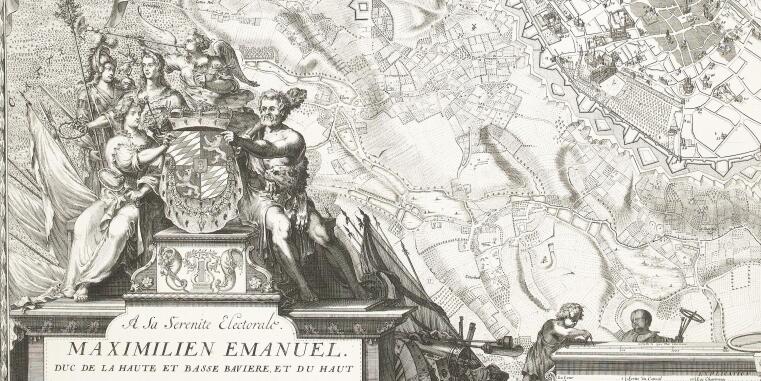

Manifesting foreign rule: Xenocratic administration and its spatial-visual presence in the Southern Netherlands in the 17th and 18th centuries
In view of the widespread dissemination of xenocracy as a type of rule in the early modern period and the important role of symbolic communication for the establishment and stabilization of institutional orders in this epoch, the question of the mediation, legitimization and perception of xenocratic power relations in the ruled provinces by means of architectural and visual media is particularly pressing.
The subproject approaches this subject area, which has hardly been systematically investigated by art historians in the early modern period, using a specific constellation of xenocracy as an example, which also underwent a change of supremacy during the period under investigation: the governorship of the Southern Netherlands in the late 17th and 18th centuries.
Subproject A is dedicated to the Wittelsbach Elector Max Emanuel (governor 1692-1706), when the territory still belonged to the possessions of the Spanish line of the Habsburgs (1522/56-1714), while subproject B examines the same region at the end of the 18th century, when it fell to the House of Austria after the War of the Spanish Succession (1714-1795). Of particular interest here is the term of office of the plenipotentiary minister Georg Adam von Starhemberg (1770-83) under the governor Karl Alexander von Lothringen (1744-80) and the governor couple Marie Christine von Österreich and Albert Kasimir von Sachsen-Teschen (1780-93).
This was a xenocracy under the conditions of cultural proximity, as there were already many interconnections and exchange relationships between the Southern Netherlands and Spain and Austria. Nevertheless, ideas of foreignness were a constitutive element of the perception of power.
The spectrum of objects to be examined is diverse. It includes building and furnishing projects as stages for ceremonial and ritual forms of action in which foreign rule asserted itself on site and which provided a spatial and visual-media framework for the interaction between rulers and ruled, but at the same time could also set in motion independent processes of perception, reception and transformation: Palaces and country residences of governors and leading officials, portraits of rulers and office holders including their presentation from the palace to the print medium are of interest.
Furthermore, mobile or ephemeral-performative forms of visual interaction and communication with the local population, for example in the context of festive culture and the ruler's cult (processions or receptions, but also medals) will be taken into account. These materials will be used to examine the dynamics of the exercise of xenocracy on site from a comparative perspective, as well as the role that architectural and visual media played in the representation of xenocratic rule and in the stabilization or successive dismantling of the ascriptions of foreignness associated with it.

